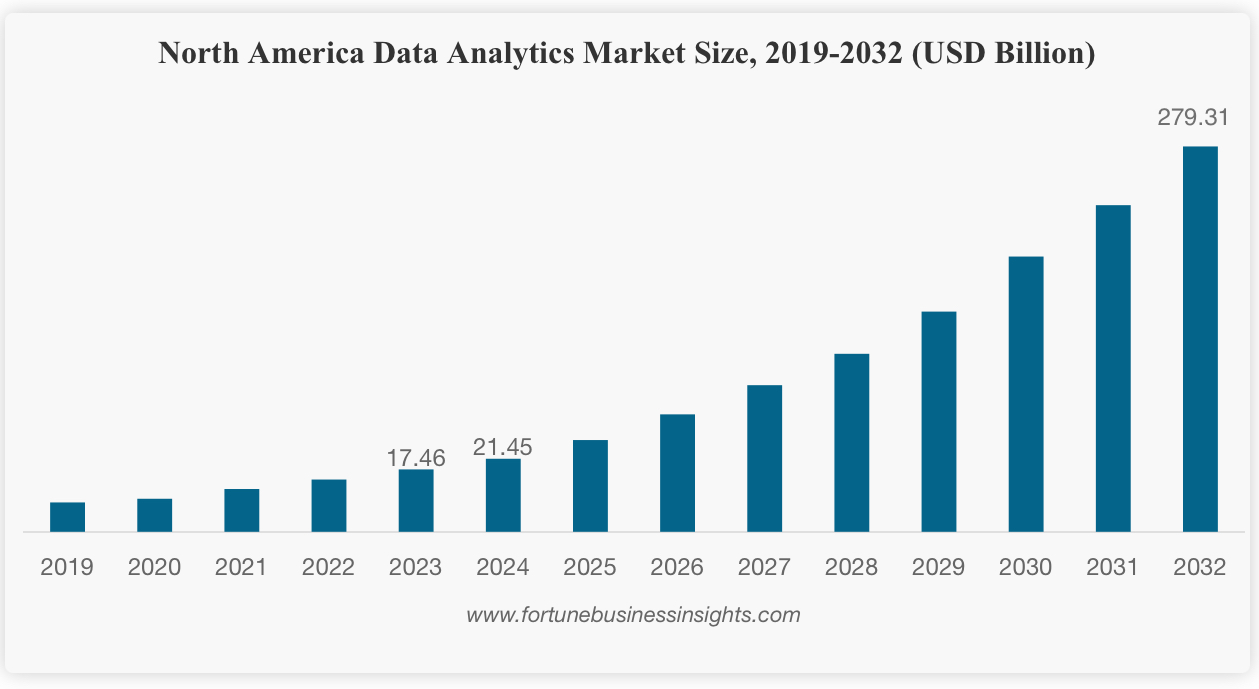The Uselessness of the Incredibly Useful GTM Data
Is our data changing how we work? Or just how we report?
Ahhh, the promise of data—solving all our problems, making decisions for us, and turning sales teams into well-oiled machines of efficiency! No wonder North American businesses spent $21.45 billion on data analytics in 2024, with projections soaring to $279 billion by 2032. But here’s the kicker: for that to be considered a good investment, it needs to generate at least $140 billion in incremental revenue today and $1.8 trillion by 2032.
So… how’s that working out for everyone? Is your current go-to-market data yielding a 7x ROI?
Data, Data Everywhere—And Yet…
Not long ago, just having data was the problem. Back in 2008, most companies juggled homegrown CRMs and clunky web apps. Salesforce had only 1.1 million users (compared to 250 million now), and if you needed customer data, you better have printed that spreadsheet before leaving the office. Fast forward to today, and collecting and integrating data is no longer the issue—cloud-based SaaS solutions and APIs have made sure of that.
So, what’s the real challenge? Using data to actually change behaviors.
When Data Alone Isn’t Enough
Let’s talk about Company ACME (names changed to protect the guilty). ACME wanted to shift from a transactional sales model (customers buy easily online from multiple suppliers) to a high-touch enterprise model (where sales interactions deeply impact revenue generation). Naturally, they had tons of data—leads, conversion rates, pipeline reports, win rates, industry breakdowns—you name it.
But here’s the problem: the data wasn’t influencing behavior.
Managers used it for inspection—to track progress, compare performance, and hold sellers accountable. But it wasn’t changing how the team approached the business. The data was like a dashboard on a parked car—nice to look at, but it wasn’t getting them anywhere.
Making Data Work: Cadence & Process
To fix this, we built a cadence of structured conversations where salespeople—not managers—used data to assess their business and plan their next moves. Two types of meetings proved invaluable:
Pipeline Reviews (Twice Weekly, 5 Min per rep)
Focused on deals closing in the next 10 business days and early-stage high-touch conversations
Everyone used the same auto-populated dashboard (no “my numbers are different” excuses)
Regular use made CRM adoption natural—no more resistance to data entry
Portfolio Reviews (Biweekly, 15 Min per rep)
Focused on long-term account planning rather than just chasing the next deal
Tracked the top 20% of accounts driving 80% of revenue
Tied pipeline to yearly revenue forecasts, forcing a proactive approach
Key Rule: The salesperson, not the manager, led the discussion—publicly. If someone came unprepared, it showed. And nothing drives accountability like a little peer pressure.
The Result?
Palpable behavioral change. The CRM was no longer an inspection tool; it became a decision-making engine. Salespeople took ownership, managers had better visibility, and most importantly, persevering after many awkward and tough meetings—the company unlocked consistent and predictable growth after a decade of stagnation.
The Takeaway
GTM data is incredibly useful—but only if you create the space and cadence to act on it. It takes effort to build a process that turns raw data into behavioral change, but once it clicks, watching your team evolve week over week is priceless.
So, next time someone throws a fancy dashboard at you, ask yourself: Is this changing how we work? Or just how we report?



